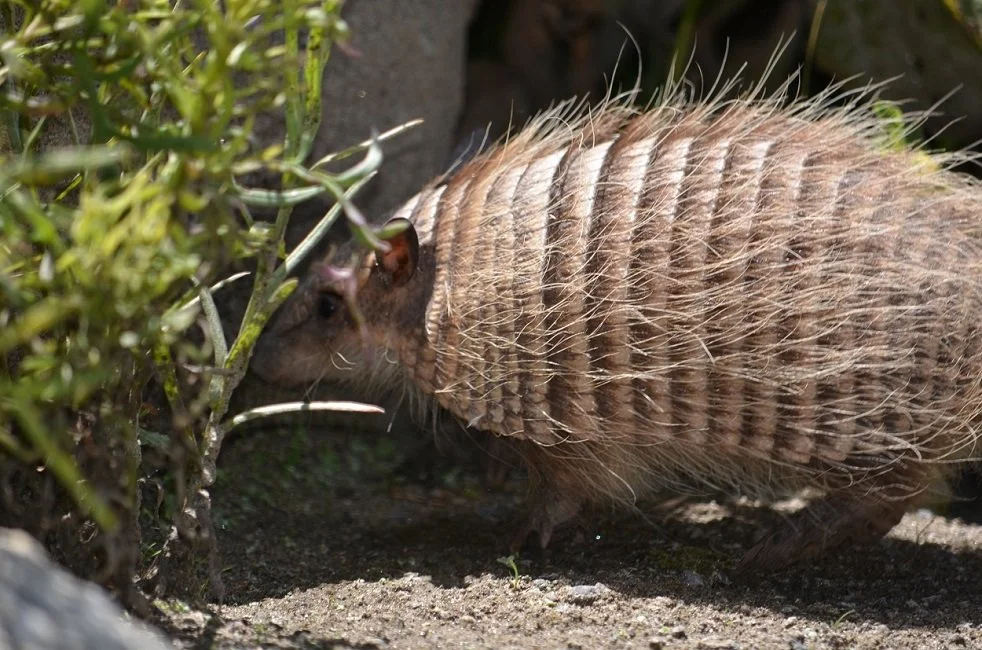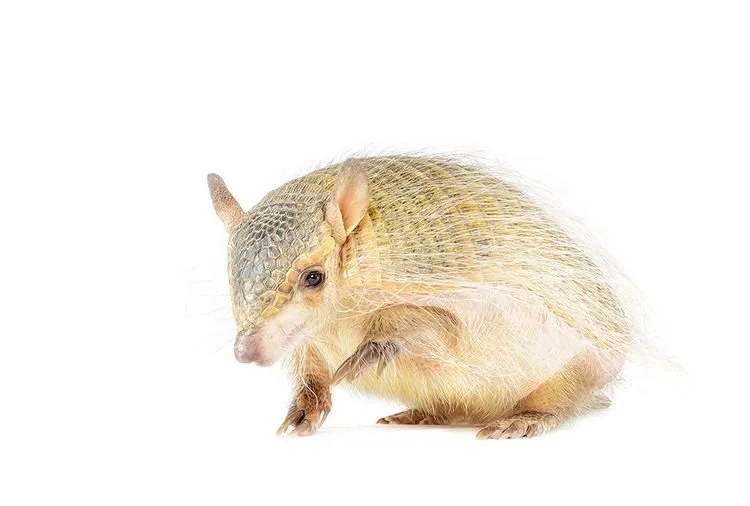You Scream, I Scream, We All Scream for… Hairy Armadillos







I am very excited about this week, because I get to broaden your idea of what an armadillo is. Armadillos come in a wide variety of shapes, sizes, and even levels of hairiness. Before coming into the zoo world, my only knowledge of armadillos was limited, but I at my first zoo job I was introduced to the Screaming hairy armadillo. These marvelous, hairy, digging machines are just waiting to have their moment in the sun…ok maybe a nice cool burrow.
What is it? Let’s go back to the “scientists are smart, not creative” rule. Last part of the name is what it is, so it’s an armadillo. Check. The first name(s) are descriptors, so screaming and hairy. Check. So this wonderful species is a type of hairy armadillo (there are 3 species of hairy armadillo) that is known for their mighty, mighty squeals. This species is the smallest of the hairy armadillos, only growing between 11-16 inches and averaging 28.7 oz. Though small, they win the best hair award since Screaming hairy armadillos have more hair growth than any other armadillo species. Another distinction between armadillo species is the amount of plates. Screaming hairy armadillos have 18 bands of armor, 6 to 8 of which have the ability to move. These marvelous hairy tanks live around 8 to 9 years in zoological settings.
Where do they live? It may be surprising, but all armadillo species are found in the Americas. Screaming hairy armadillos are only found in South America, specifically Paraguay, Bolivia, and Argentina. They can live in a wide variety of ecosystems, from tropical dry forests to grasslands, to deserts. As long as they can dig, they can live there. So that takes rocky terrain off the table. Something really nifty about this species is that they switch between being nocturnal (awake at night) in the summer and diurnal (awake during the day) in the winter.
What do they eat? The mighty Screaming hairy armadillo has a very accepting palate. Like quite a few of the animals I’ve covered so far, these guys are omnivores, eating both plants and meat. They like to eat insects, lizards, birds, frogs, mice, and a variety of seed pods. It may be a little surprising that a half of their stomach content is sand. Their mothers never taught them table manners, and they ingest a lot of sand with their meals. I guess that’s one way to fill up but ouch.
What does armadillo dating look like? Sadly, there is no great romance story. It’s the typical tale of females making an alluring smell when ready for baby-making time, nearby males tracking the scent, and then MA rated time. If this pairing is successful, the female will carry up to 2 pups for around 60-75 days and will nurse the pups for about 60 days. These armadillos are sexually mature at 9 months old (craziness) and can have up to 2 litters a year. In zoological setting there is some difficulty breeding this species due to a lack of successful breeding pairs and low reproductive rates. Zoos are still hoping to create love matches and have cute and stable population within human care. I don’t know if this is a fun fact or not, but many species, including our armadillo friend, will eat their young when stressed….so….Xanax for everyone! *Please do not give animals Xanax unless prescribed by a medical professional. Thank you*
What super powers do the Screaming hairy armadillo have? Oh man, these guys are lean, mean, digging machines! All armadillos have really cool claws built for digging, and make very impressive burrows. They usually dig near the base of a shrubs or carcasses where they can easily find food. Unlike other armadillos, Screaming hairy armadillos have two odd hunting techniques that have been observed. One method is the armadillo sticking their head into the sand and then become a burrowing tornado…or as I have now dubbed this move, Armadillonado, creating a cone shaped hole to locate grubs. Another researcher saw a hairy armadillo imitate a WWE wrestler. It jumped up and body slammed a snake, and the snake was cut up by the sharp edges of the armadillo’s armor (aka carapace). Another super power is that these tough buggers don’t need to drink water on a regular basis. Thanks to super-efficient kidneys, Screaming hairy armadillos can extract the necessary water from their food. This adaptation is how desert animals survive and I will cover it more extensively with a desert species (which includes animals that live in the ocean!). Lastly, I would be remiss if I didn’t mention this species’ mighty, mighty squeal of fury. Usually these armadillos are very quiet, but when handled, stressed, or in danger, these little tanks will emit a high-pitched squeal. By screaming bloody murder, the hope is the threat/predator becomes startled and leaves the armadillo alone long enough to scurry to safety. Unfortunately for them, people find this scream to be cute and highly entertaining….of course I’m attaching a video below so you can witness this banshee.
How many Screaming hairy armadillos are there? There are currently two subspecies recognized (we like to change our minds on a fairly regular basis because we are always learning and growing). Unlike many other species I talk about, these guys are doing alright. Their population is stable, but we do not have numbers because, I assume, no one wants to walk around counting all the armadillos. There is a little oddity, in that these guys are usually found more centrally within the continent, but there is a small population found around Buenos Aires.
Science Time!!!
Though there Screaming hairy armadillos are one species, I will be listing the subspecies underneath as well.
Screaming hairy armadillo - Chaetophractus vellerosus
C. v. vellerosus
C. v. pannosus
According to the IUCN Red List, this species is of Least Concern and is Stable. Which is great.
Threats the species is facing include, over-hunting for its meat and carapace, persecution as a pest, road strikes, predation of domestic dogs, habitat loss, and for those armadillos living near Buenos Aires, mining is affecting them negatively.
Resources:
Anteater, Sloth and Armadillo Specialist Group (n.d.).Screaming hairy armadillo. Species. https://xenarthrans.org/species/armadillos-2/screaming-hairy-armadillo/#:~:text=However%2C%20there%20are%20two%20subpopulations,is%20not%20disjunct%20and%20is
IUCN SSC Anteater, Sloth and Armadillo Specialist Group. (2017). Chaetophractus vellerosus (amended version of 2016 assessment). The IUCN Red List of Threatened Species. https://dx.doi.org/10.2305/IUCN.UK.2017-3.RTLS.T89604632A119877197.en
Smithsonian’s National Zoo & Conservation Biology Institute. (n.d.). Screaming hairy armadillo. Animals. https://nationalzoo.si.edu/animals/screaming-hairy-armadillo

